LIVING HISTORY
To understand the success of the F4 Spanish Championship, which is being experienced today at the Circuito Madrid Jarama-RACE, we must travel back in time. It was 1967 and Spain was in the midst of the motorization process. The Seat 600, launched six years earlier, was bringing about a real revolution in Spain. An accessible and versatile car. Perfect for the day-to-day life of a country that had already overcome the post-war period. The automobile was more of a luxury than an object that was the object of a hobby or -even- of passion; a passion for speed. With the intention of changing this idea, the RACE decided to build a speed circuit, the first in Spain. An arid terrain was chosen in San Sebastián de los Reyes. The layout was promoted by the then president of the Club, the Duke of Montellano who commissioned the design to John Hugenholtz, architect and ideologist of two mythical racetracks: Zandvoort, in Amsterdam & Suzuka, in Japan.Thus was born the Jarama RACE Circuit.
JARAMA AND FORMULA 1
The podium was as follows: Graham Hill (Lotus-Ford), Denny Hulme (McLaren-Ford) & Brian Redman (Cooper-BRM). This is how the XVI Spanish Grand Prix, already scoring for the Formula 1 World Championship, will be remembered on May 12, 1968. Many years have passed since that inauguration and that dream triumvirate. Many kilometers and countless tires burned on the Jarama track. Thus, we arrive at a date that marked a before and an after. Because if the Englishman Graham Hill was the first winner at Jarama, by points, there was also one who was the one to close the door.
THE CLOSEST FINISH
If that race is remembered for anything, it is because it is still the one with the closest finish in the history of Formula 1. Five cars were close together with a difference of only 1.24 seconds, but also because it was the sixth and last victory in the career of the great Gilles Villeneuve, with the mythical Ferrari number 27. But it is also remembered for the superb defense of the Canadian over four rivals. It was pure art to keep behind him, Jacques Laffite (Ligier Talbot), por 0,2 segundos; John Watson (McLaren), a 0,5; Carlos Reutemann (Williams), a 1.00 and Elio de Angelis (Lotus), 1.24. Better way to say farewell to Jarama F1? There probably won’t be.
AN ENCHANTING ROUTE
The route has not changed from the original. It is 3,850 meters long. It is formed by 16 curves that, since its beginnings, have turned it into a very technical circuit. However, the width of its roadway allowed it to be negotiated in very good conditions. The names of the current curves are the following, in order from 1 to 16; Nuvolari, Fangio, Varzi, Le Mans, Farin, Pegaso (ramp, under the current Dunlop bridge), Ascari, Portago, Bugatti, Monza, María de Villota.
JARAMA GROWS
Today, apart from the competitions, the track is rented for different events related to the world of motorsport, such as RACE driving courses, brand presentations, commercial recordings, official photo sessions, tests… and with the latest remodeling, events for enthusiasts have been organized throughout the year: Jarama Vintage Festival, Jarama Fan Club, Track Days, Toyota GR Days, Jarama Classic and even driving experiences. Currently, there are also several events a year in which anyone can drive their car in order to get a taste of driving on the circuit or come in person to enjoy the special atmosphere of these busy days.
The construction of the Control Tower Building was a major milestone of the remodeling. Added to this was the Jarama Paddock Club, a space inaugurated in 2015, intended for the organization of events and in which the Race Direction and Timing Rooms are integrated, was the first milestone of the comprehensive renovation project of the Circuit facilities that began with the Jamara 2021 Project and that contemplates continuing with the improvements of a Spanish motor center with history and a great future, in which the F4 Spanish Championship, is an angular competition.

















